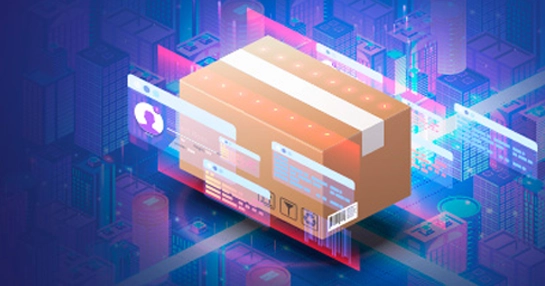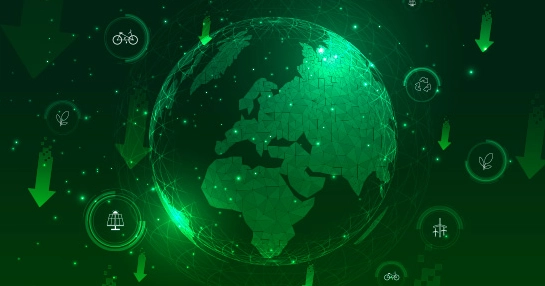One thing that is clear is that everyone wants to get paid. When times are tough companies need to look closely at who they pay and when, and there are always win-win scenarios possible with suppliers. That’s why we’ve seen an upturn in interest in automating AP processes. In this episode of GEP Insights, we talk to Dmitriy Lerman of GEP’s product management group about how GEP is leading the way with a new AP Automation solution, and how it can help companies catalyze transformation of business value in uncertain times.

Dmitriy Lerman
Director

Paul Blake
Director
Paul: Hello and welcome to GEP Insights. The podcast for intelligent procurement and supply conversation. I'm your host Paul Blake. For the past few years, we've been talking about digital transformation in the workplace and digital procurement transformation specifically. But one area that has in many cases been left out of the procurement transformation plan has been accounts payable. Why is that. Well perhaps because in many cases AP doesn't fall under procurement. It's a finance function. And in other cases, the process despite being very manual isn't broken so why rush to fix it. But as companies are seeing the huge benefits of digital transformation and automation in other areas, perhaps the time is right to complete the set and automate AP. On the other hand, for some companies the way to start a transformation program is to deal with the most manual and sensitive processes first. With me today to discuss automating accounts payable is Dmitriy Lerman of GEP’s Product Management Group. Dmitriy, thank you for joining GEP Insights, can you start by telling us a little bit about you?
D: I’m a product management professional with 15 years of experience in product management in financial services payments and payables. At GEP, I'm leading the accounts payables module delivering AP automation to GEP’s top clients.
P: All right. So AP automation is our subject today. Let's start perhaps with an obvious question. What is AP, Dmitriy. And then a follow up why is AP automation a hot topic right now.
D: Accounts Payable means a lot of things to a lot of different people. Generally, it breaks down into two categories. It's either about processes that lead up to making a payment, such as the processing of invoices, the processing of credit memos, the optimization of those processes and ensuring it's done with perfection and in compliance. And second, it's around making the payments themselves, transferring funds from one point to the next reliably and at an acceptable cost. So, they for the purposes of this conversation let's focus on the first aspect.
P: The follow up then why is it that right now many companies have a particular interest in AP automation. What are the problems that companies have today that are leading them to look for new AP solutions?
D: Companies look for new AP solutions for I would say two or three reasons depending on how you count. One is AP at times is a neglected function. It could be done manually and customers a lot of the time do it manually achieving high levels of reliability at the cost of human capital. And at some point, as organizations grow and they tend to get more automated, conversation comes to AP to understand why automation has not been implemented and that's the impetus for looking for an automated solution. The second reason some customers are in the market for AP automation is that they may have had a system in place to automate some of their AP operation and either that system is nearing the end of its contract and the customer is in line to operate the system or that system may have been homegrown built sometime back and it may have outlived its useful life cycle and it's due for an upgrade.
P: OK in your estimation, Dmitriy what kind of companies are looking to introduce automation of accounts payable and why particularly those kinds of companies? Does it go right across the board?
D: It goes right across the board. Even though my experience has been that the needs and the level of automations are different as you look at different customer sets and different market segments specifically. Smaller firms are usually less automated and their needs are specific to making the payments, making the payment reliably with high visibility, and some basic minimal approval processes when it comes to processing an invoice ensuring that paying the right things and integration into more commonly available ERP and accounting systems such as QuickBooks. As you go upstream and you look at larger and larger customers as you would expect their level of automation and the level of AP automation penetration into the customer segment is much higher than it is for small, medium, or even large companies. As you get up to enterprise, they have done much better on the automation front, but also you would be surprised that in my view I have seen still a lot of enterprise level corporations struggle with manual processes so the need to automate AP has not escaped any customer segment but the needs continue to increase in complexity as you go more upstream. So for an AP department that is running a global operation for an international company looking to comply with the regulation across multiple geographies, looking to comply with internal policies, looking at multiple currencies, multiple languages, all of the different tax jurisdictions different levels of approvals required for different commodities, the requirements and the needs are much more sophisticated than they are for a small business owner.
P: This year 2020, I think it would be unsurprising if there were new drivers for change in accounts payable organizations as a result of the huge turmoil that we've all experienced over the course of the last few months. But is that something that you're actually seeing. Are we seeing that the events of this year have increased the pressure on companies to automate?
D: What we've seen, and my feedback is probably anecdotal right now as we're still in relatively the early stages of this phenomenon, it has not been years and years and hopefully it will not be years and years or so of very interesting reality. Wish everybody good health. The phenomenon has worked out in the way that every company is trying to make the best use of their resources now even more than usual, in part because their employees are struggling with health issues, in part because their business is slowing down a little bit. So, they are looking for more and more efficiencies. But on the AP front, surprisingly so, the volume of work has not declined as much as some people would have expected because a lot of the business with for large enterprises with their suppliers it's all contracted business so their suppliers continue to deliver goods. So for indirect purchasing maybe they are buying fewer items related to general business expenses because people are not in the office but a lot of the production is still there. A lot of the contracted items is still there, a lot of the backlog of invoices for suppliers are looking for status quo they used before the volume of requests from the suppliers until the AP team. A lot of the work is still there, and the AP teams are being asked to do that with less. So that is the phenomenon that we have seen where AP automation becomes an even higher priority.
P: And so that brings us to what we at GEP have been doing about this. You and your team have just completed innovating a brand-new accounts payable automation function as part of GEP SMART. Tell us a bit about that and what makes it different to what we've seen before in the market.
D: Absolutely. Thank you for that. So, let me first paint a baseline picture and then I will do a compare and contrast to what is different. So, on the baseline, GEP has always been the leader in putting forth the best ironclad enterprise level AP automation solution. That's a solution that's catering to the most sophisticated AP operations that can meet all of the controls at their fingertips. So that has always been there, and we have enjoyed a lot of success with our clients and we've delivered a lot of positive results for our clients. So the compare and contrast where we have now made improvements is the same enterprise level capability that has previously been deployed together with the full suite of our products can now be deployed separately where it can work within the customer's ecosystem, where the customers other components complete the entire picture. So, they don't have to take an entire end-to-end digital transformation journey in their procurement to reap the benefits of AP automation.
P: So this is then essentially a way of dealing with the demand in the marketplace for AP automation for companies who are looking to solve those particular problems now and quickly, without perhaps wanting to engage in an entire end-to-end digital program. But also, it's a quick and easy way for companies to start that transformation journey, right?
D: Absolutely. To further add to your point Paul, this is a very easy way to start the journey but it's a journey that can be easily future proof. And the reason is that the SMART AP automation module, even though it can operate as a standalone module and continue to deliver value on its own, it's so easy then to go from that. And add other GEP modules without having a big installation or big deployment project where if a customer wishes to undertake that digital transformation journey, it is so easy for them to do it. They don't have to procure another vendor, don’t have to run another project, and they can do that as quickly as slowly as they desire. Again, given the control of their operation and their budget.
P: Now with a little bit of insider knowledge here I can say that it's surprising how quickly your team have been able to create this new evolution of accounts payable automation software. So, talk to us a little bit if you would about that. That rapid speed of development that we're seeing within the engineering team here at GEP. Seems to me over the course of the last few years has increased rapidly. What is it that's making that possible?
D: Absolutely. There are three elements that come and contribute to the success of fast development. First is we are working on an existing base of a very strong product to begin with. We have our full end-to-end fully integrated product and we took that as a base and leverage that to create an AP standalone product that can work with other components in the customer's ecosystem. The second is the top-notch quality of our developers. These are individuals who are highly skilled, highly talented, and inclined to say yes. And third, and possibly one of the most important elements is the voice of our existing customers. We support the AP operation for some of the biggest brand names in this world. And these customers are so fantastic to work with. They give us feedback, they help us ideas and features that tell us how the product could be improved for the benefit of their own AP operation. And then of course we make that available for the remainder of our customer base and our prospects.
P: So, Dmitriy you've described the GEP SMART accounts payable automation function as both a standalone solution and also as part of the GEP SMART unified platform. Tell us a little bit more about how a customer might make the transition from using just accounts payable automation to using other parts of the GEP software landscape. What's the sort of logical extension that they would take from starting with AP?
D: Thank you. That's a very interesting question. We have seen a lot of the time customers start on the other side. They start with sourcing and suppliers and then go further down into the procurement process once you have started onboarding suppliers and managing your spend and buying items, then you begin to worry about modules. How do you place your purchase orders. How do you get those approved and get them delivered to the suppliers. And then the last thing is about how you pay.
Now we're seeing that the opposite trend is also true. People start at the very end of the procurement process, they’re starting with “well how am I going to pay this” And the reason some customers do that is because it's a painful thing if you are still doing it manually. So they are trying to address that pain point first and then slowly they can move back into the start of the procurement process from payments. The next step back would be purchase orders that can enable that module and that would seamlessly integrate, already leveraging the existing hooks into the ERP systems, then the requisition module, then we can speak about what is the source of truth in terms of the systems for supplier onboarding, spend management, analytics. So it would be a walk back through the procurement process.
P: Okay. Then how does it work. Talk us through how AP automation actually works for a finance organization from an operational point of view if you would.
D: Absolutely. And as I talk through that, the one thing I'd like to point out before I get started is that there is a lot of variability and configurability about our products so it doesn't just work one specific way. A lot of the time we go in with a consultative approach and we adjust to the way that our customer does AP to their internal policies and practices and we also advise on how other customers could do the same thing or overcome the same challenge. So it's a combination of product and process consulting. That's what would come in with.
So, having said that, one of the more common ways that the AP module would operate is if it's a standalone module it would ingest relevant information from other modules. For example, it would need to understand what the purchase order started out in the system. Service confirmations, goods received documents, supplier master data. So it's interesting that information in a standalone model from likely the customer's ERP system. In the fully integrated model, it would leverage that information from a SMART from other SMART modules. Then an invoice begin its life from a variety of different intake channels, the intake channels, some of the most highly utilized and highly appreciated intake channels is when a supplier receives a purchase order. With one click, a supplier can flip that purchase order into an invoice and by putting in just very few fields such as confirming the total amount in the supplier invoice number, they can generate highly reliable invoice that they can send in payments. And in contrast to some of our competition in the market the service is totally free for the supplier. And suppliers enjoy that very much along with the visibility that it gives them as to when they can get that payment.
Other intake channels include either invoice entered by the buyer on the buyer side, process through our own proprietary AI-based optical character recognition engine will also enable direct connections from suppliers or other systems where will come and just data streams and create invoices.
Once an invoice is generated, it goes through basic validation checks to make sure the document is valid and that's when the magic begins. We can match that invoice against multiple documents such as the purchase order it was received documents and we have an internal rule-based engine that can drive different exceptions based on business rules and routing automatically when the system to different constituents and that's all configurable, who’s going to be a part of the invoice resolution process. This is where the magic of the automation comes in so that you can stop doing the manual chasing of different constituents for invoice reviews and invoice approvals.
You can also add a layer of complexity to help with tax calculations as well as international global compliance to make sure invoices are compliant with different regulations. We can raise different customer exceptions depending on how taxes are calculated and what is in the invoice for freight. What is on the invoice for additional charges. We can route that invoice for approval based on how the customer wants to set up their approval authority either in our system or we can connect to a third-party system to determine where that invoice goes for approval.
Again this adds to the magic of automation where when the system is fully setup it’s just magically going to the right people clicking and invoices go through and get processed with minimal human intervention from the AP team and suppliers are happy to see that invoice is processed quickly, they are getting paid, and as long as they are in the supplier portal they can see the status of the invoice changes that go from step to step and they know when to expect the payments so they don’t have to call the AP department and say “Where's my money?” And of course at the end we keep all of this information that's archived in our system sent down to the ERP system so that ERP system has all of the same. So both systems are always fully in sync and if need be available for auditors and for validation.
P: Well, Dmitriy Lerman, thank you very much. Listeners, if you're interested in finding out more about GEP SMART accounts payable automation then you can reach out to us through the GEP website Gep.com where you'll find a lot more information about the AP automation capabilities of GEP SMART and much more besides.
So many thanks Dmitriy Lerman and thank you for these great innovations in accounts payable automation software.
D: Thank you for having me on this podcast.
P: My thanks to all of you for listening to this episode of GEP Insights the podcast for intelligent procurement and supply conversation. I've been your host Paul Blake. Join us in the next episode. Bye now.











